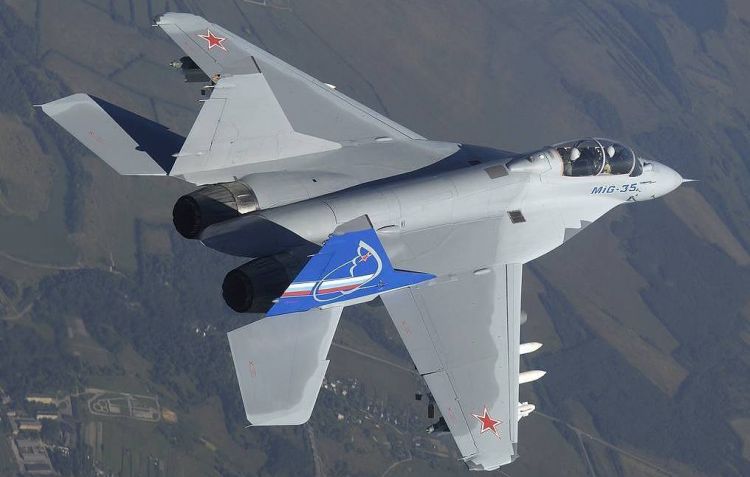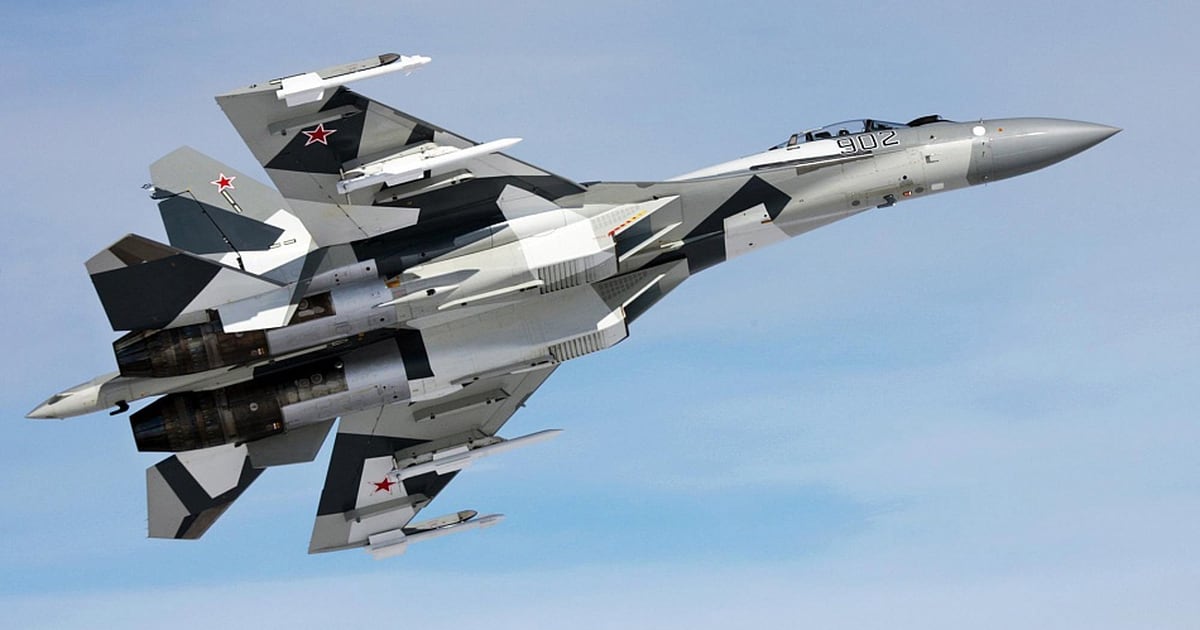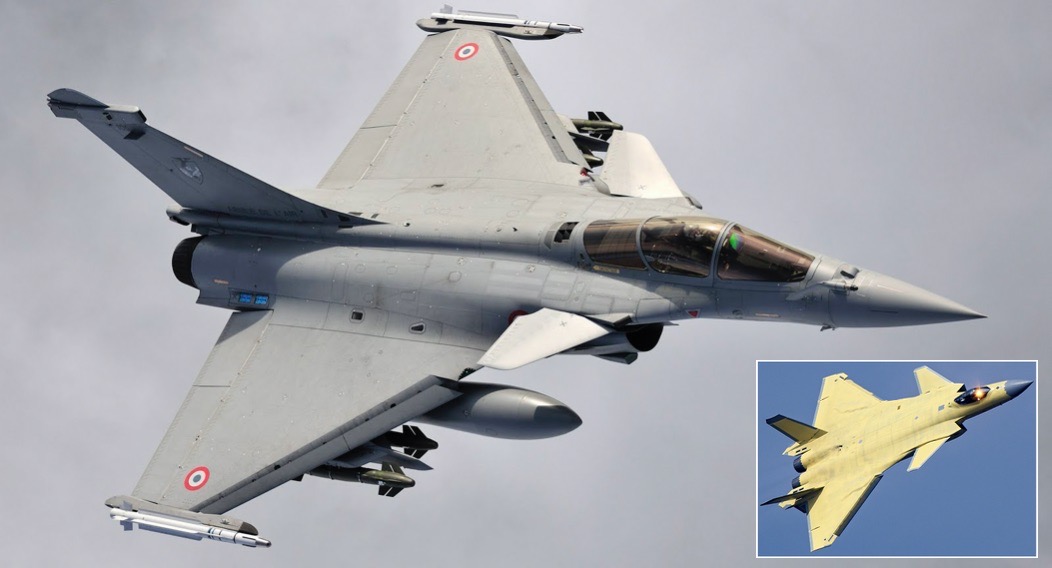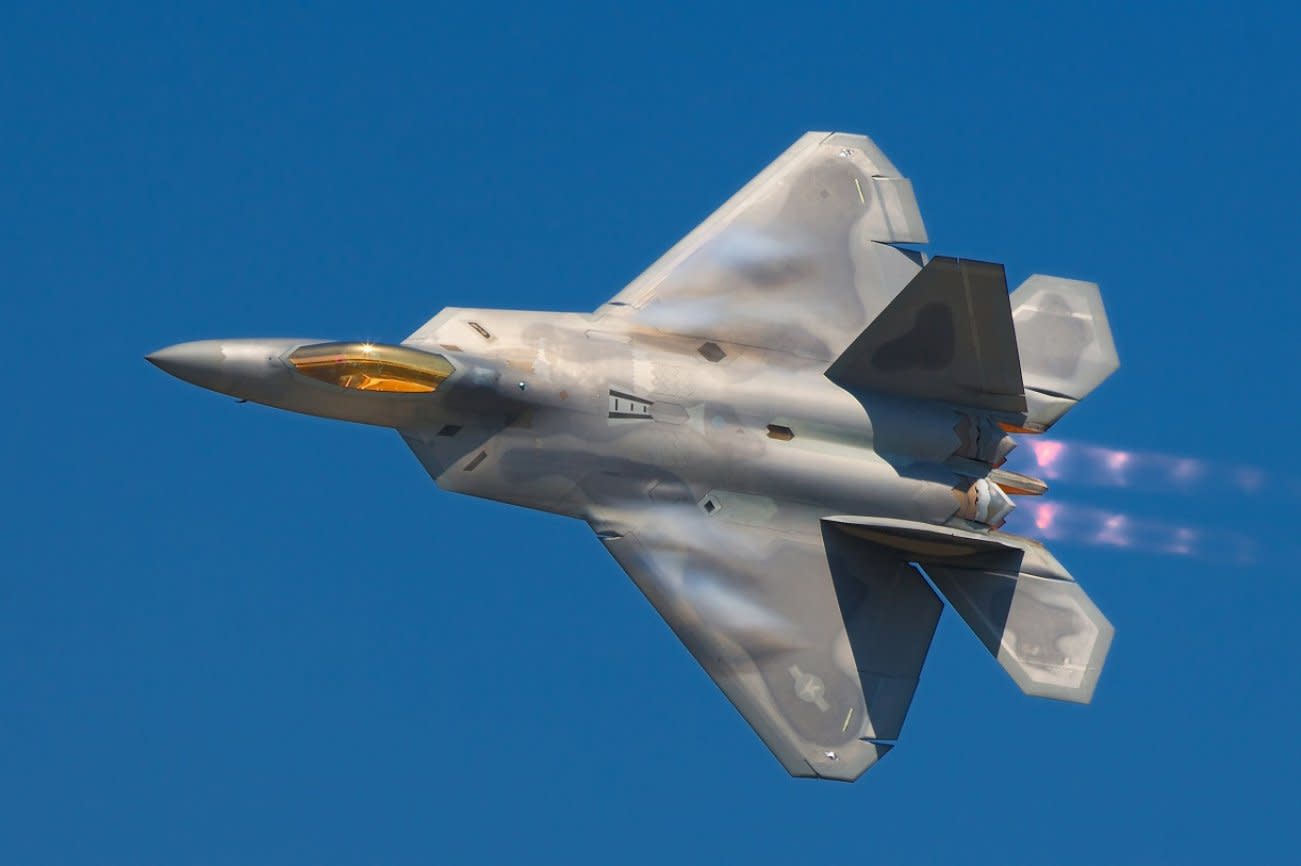You are using an out of date browser. It may not display this or other websites correctly.
You should upgrade or use an alternative browser.
You should upgrade or use an alternative browser.
Active & Future Fighter Aircrafts - Around the World
- Thread starter Scorpio
- Start date
J31/J35 - Complete Details Of Chinese FC-31 Fifth Generation Stealth Fighter Aircraft.

#Overview :
The Shenyang FC-31, also known as the J-31 or J-35 is a twin-engine, mid-size fifth-generation jet fighter currently under development by Shenyang Aircraft Corporation. The official nickname published by SAC is "Gyrfalcon". J-xx nomenclatures in the Chinese ?? military are reserved for programs launched and financed by the People's Liberation Army, while this plane was developed independently by a state-owned company.
#Development :
A photo of a model labeled F-60 was posted on the Internet in September 2011.Pictures of a possibly fully assembled aircraft parking on an airfield emerged on 15 or 16 September 2012.
The prototype conducted a high-speed taxiing test and briefly became airborne. On 31 October 2012, prototype No. 31001 conducted the model's maiden flight. It was accompanied by two J-11 fighters in a ten-minute test flight with its landing gear lowered.With the maiden test flight of the prototype No.31001 on 30 October 2012, China ?? became the second nation after the 1991 Advanced Tactical Fighter fly off, to have two stealth fighter designs in field-testing at the same time. The aircraft has continued a limited test program, with footage emerging of further flights which took place in February 2013.A scale model of the J-31 was shown at the China ?? International Aviation & Aerospace Exhibition 2012, hinting at a desire to offer the aircraft for export, as an alternative for those countries that cannot purchase the F-35.At the 2015 Dubai Airshow, AVIC released more details regarding the aircraft's capabilities. The company revealed it is still looking for a partner in the aircraft project, and is actively marketing the aircraft to People's Liberation Army Air Force. AVIC's plan is to have a production model first flight by 2019..
#Design :
J-31 incorporates certain stealth characteristics such as forward-swept intake ramps with diverterless supersonic inlet (DSI) bumps and a two-piece canopy.
#Airframe :
The J-31 is smaller than the Chengdu J-20. The use of twin-wheel nose landing gear led to speculations that the J-31 may have been intended to be a carrier based fighter. Bill Sweetman has cited several improvements to the F-35C design files the Chinese ?? may have acquired in the J-31. Analyst David Bignell argues that J-31 is rather based on F-22, due to the similarity in platform, shape, aerodynamics and airframe configuration, instead of F-35..The J-31 has two internal weapons bays that can each carry two medium-range missiles, along with two heavy hardpoints and one light hardpoint on each wing, but while it seems to have added an additional light hardpoint to each wing over the capacity of the F-35, it seems to lack the capacity of the F-35 to mount a centerline gunnery or jamming pod.
#Engines :
According to Vladimir Barkovsky of Russian ?? Aircraft Corporation MiG (formerly known as the Mikoyan-Gurevich Design Bureau), the engines on the prototype aircraft are RD-93s.[18][50] However, China ?? already has an engine similar to the RD-93, the Guizhou WS-13 currently installed on the JF-17 which has the same thrust and size of the Russian RD-93. China ?? is working on an improved variant named WS-13E with 100 kN (22,000 lbf) of thrust for use on the J-31.
#Payload :
The J-31 can carry 8,000 kg (18,000 lb) of payload, with four munitions totaling 2,000 kg (4,400 lb) internally, and 6,000 kg (13,000 lb) carried on six external hardpoints; primary armaments include the PL-10 short-range missile and PL-12 medium-range air-to-air missile. It has a combat radius of 648 nmi (746 mi; 1,200 km) and a maximum take-off weight of 25,000 kg (55,000 lb).
#Stealth
The J-31 is speculated to use stealth coatings instead of "baked in" fiber-mat stealth. Officials from AVIC claim the aircraft to be stealthy against L-band and Ku-band radars, and would be low-observable against a number of multi-spectrum sensors.The engine nozzles are apparently being redesigned to reduce radar and infrared signatures.
#Specifications ?
#Crew : One
#Length : 16.9 m (55 ft 5 in)
#Wingspan : 11.5 m (37 ft 9 in)
#Height : 4.8 m (15 ft 9 in)
#Wingarea : 40 m2 (430 sq ft)
#MTW : 28,000 kg (61,729 lb)
#Powerplant : 2 × RD-93 afterburning turbofans, 85 kN (19,000 lbf) thrust each.
#Maxspeed : 2,200 km/h (Mach 1.8)
#Combatradius : 1,250 km (780 mi, 670 nmi) on internal fuel, or 2,000 kilometres (1,200 mi) with external tanks.
#Arnament :
Hardpoints :
6 x external, and internal bay with a capacity of up to 8,000 kilograms (18,000 lb), including 2,000 kilograms (4,400 lb) internally.
Missiles :
Air-to-air missiles : 12 x medium-range
Air-to-ground missiles: 8 x supersonic
Bombs :
8 × 500 kg deep-penetration bombs
30 x smaller bombs
#Avionics
KLJ-7A AESA radar
Distributed aperture system (DAS) optical early-warning system
Electro-optical targeting system (EOTS)
#Overview :
The Shenyang FC-31, also known as the J-31 or J-35 is a twin-engine, mid-size fifth-generation jet fighter currently under development by Shenyang Aircraft Corporation. The official nickname published by SAC is "Gyrfalcon". J-xx nomenclatures in the Chinese ?? military are reserved for programs launched and financed by the People's Liberation Army, while this plane was developed independently by a state-owned company.
#Development :
A photo of a model labeled F-60 was posted on the Internet in September 2011.Pictures of a possibly fully assembled aircraft parking on an airfield emerged on 15 or 16 September 2012.
The prototype conducted a high-speed taxiing test and briefly became airborne. On 31 October 2012, prototype No. 31001 conducted the model's maiden flight. It was accompanied by two J-11 fighters in a ten-minute test flight with its landing gear lowered.With the maiden test flight of the prototype No.31001 on 30 October 2012, China ?? became the second nation after the 1991 Advanced Tactical Fighter fly off, to have two stealth fighter designs in field-testing at the same time. The aircraft has continued a limited test program, with footage emerging of further flights which took place in February 2013.A scale model of the J-31 was shown at the China ?? International Aviation & Aerospace Exhibition 2012, hinting at a desire to offer the aircraft for export, as an alternative for those countries that cannot purchase the F-35.At the 2015 Dubai Airshow, AVIC released more details regarding the aircraft's capabilities. The company revealed it is still looking for a partner in the aircraft project, and is actively marketing the aircraft to People's Liberation Army Air Force. AVIC's plan is to have a production model first flight by 2019..
#Design :
J-31 incorporates certain stealth characteristics such as forward-swept intake ramps with diverterless supersonic inlet (DSI) bumps and a two-piece canopy.
#Airframe :
The J-31 is smaller than the Chengdu J-20. The use of twin-wheel nose landing gear led to speculations that the J-31 may have been intended to be a carrier based fighter. Bill Sweetman has cited several improvements to the F-35C design files the Chinese ?? may have acquired in the J-31. Analyst David Bignell argues that J-31 is rather based on F-22, due to the similarity in platform, shape, aerodynamics and airframe configuration, instead of F-35..The J-31 has two internal weapons bays that can each carry two medium-range missiles, along with two heavy hardpoints and one light hardpoint on each wing, but while it seems to have added an additional light hardpoint to each wing over the capacity of the F-35, it seems to lack the capacity of the F-35 to mount a centerline gunnery or jamming pod.
#Engines :
According to Vladimir Barkovsky of Russian ?? Aircraft Corporation MiG (formerly known as the Mikoyan-Gurevich Design Bureau), the engines on the prototype aircraft are RD-93s.[18][50] However, China ?? already has an engine similar to the RD-93, the Guizhou WS-13 currently installed on the JF-17 which has the same thrust and size of the Russian RD-93. China ?? is working on an improved variant named WS-13E with 100 kN (22,000 lbf) of thrust for use on the J-31.
#Payload :
The J-31 can carry 8,000 kg (18,000 lb) of payload, with four munitions totaling 2,000 kg (4,400 lb) internally, and 6,000 kg (13,000 lb) carried on six external hardpoints; primary armaments include the PL-10 short-range missile and PL-12 medium-range air-to-air missile. It has a combat radius of 648 nmi (746 mi; 1,200 km) and a maximum take-off weight of 25,000 kg (55,000 lb).
#Stealth
The J-31 is speculated to use stealth coatings instead of "baked in" fiber-mat stealth. Officials from AVIC claim the aircraft to be stealthy against L-band and Ku-band radars, and would be low-observable against a number of multi-spectrum sensors.The engine nozzles are apparently being redesigned to reduce radar and infrared signatures.
#Specifications ?
#Crew : One
#Length : 16.9 m (55 ft 5 in)
#Wingspan : 11.5 m (37 ft 9 in)
#Height : 4.8 m (15 ft 9 in)
#Wingarea : 40 m2 (430 sq ft)
#MTW : 28,000 kg (61,729 lb)
#Powerplant : 2 × RD-93 afterburning turbofans, 85 kN (19,000 lbf) thrust each.
#Maxspeed : 2,200 km/h (Mach 1.8)
#Combatradius : 1,250 km (780 mi, 670 nmi) on internal fuel, or 2,000 kilometres (1,200 mi) with external tanks.
#Arnament :
Hardpoints :
6 x external, and internal bay with a capacity of up to 8,000 kilograms (18,000 lb), including 2,000 kilograms (4,400 lb) internally.
Missiles :
Air-to-air missiles : 12 x medium-range
Air-to-ground missiles: 8 x supersonic
Bombs :
8 × 500 kg deep-penetration bombs
30 x smaller bombs
#Avionics
KLJ-7A AESA radar
Distributed aperture system (DAS) optical early-warning system
Electro-optical targeting system (EOTS)
Pilots of Russia’s MiG combat planes to get helmet-mounted target acquisition systems

 m.ednews.net
m.ednews.net

Pilots of Russia’s MiG combat planes to get helmet-mounted target acquisition systems | Eurasia Diary
Pilots of Russia’s MiG combat planes to get helmet-mounted target acquisition systems | Eurasia Diary
EQUIPMENT OF US AIRFORCE :
Ac130J GhostRider is a gunship based on C 130 cargo plane with a built in 105mm canon and 30mm gun as well as bomb racks for hellfire missiles and guided bombs.
Described as a bomb truck with guns by the people who operate it Ac130J is an extremely effective close air support aircraft that has served the US military for decades in its previous iterations.
Ac130J is equipped with a variety if sensors for effective ground attack operations.
A total of 32 aircraft are planed with 10 in service.

Ac130J GhostRider is a gunship based on C 130 cargo plane with a built in 105mm canon and 30mm gun as well as bomb racks for hellfire missiles and guided bombs.
Described as a bomb truck with guns by the people who operate it Ac130J is an extremely effective close air support aircraft that has served the US military for decades in its previous iterations.
Ac130J is equipped with a variety if sensors for effective ground attack operations.
A total of 32 aircraft are planed with 10 in service.
Sikorsky to pitch Armed Black Hawk to Philippines

Sikorsky will formally propose its S-70i Armed Black Hawk for a Philippine air force attack helicopter requirement.
The proposal for six helicopters would build on Manila’s order for 16 S-70is in a combat utility configuration, says Jon Rudy, regional executive at Sikorsky, a unit of Lockheed Martin.
The 16 S-70is are being produced at the company’s PZL Mielec unit in Poland. Deliveries for the order, which Sikorsky sealed in early 2019, will commence in the fourth quarter of this year and will be completed in 2021.
We believe that Armed Black Hawk is compelling for the Philippines air force… in that it is going to have 100% baseline commonality with their combat utility helicopters,” says Rudy. “So you can imagine the economies that are associated with support, training and logistics.”
As with Manila’s baseline S-70is (also designated as UH-60s) the Armed Black Hawks would be produced at PZL Mielec. If necessary, the armed version can be reconfigured for other missions, such as transport and humanitarian relief.
The company has already mooted the proposal with Manila. Should the Armed Black Hawk be selected, Rudy says the first example could be delivered in June 2022, with the balance in 2023.
Joe Palumbo, UH-60 programme director at Sikorsky, adds that the helmet-based targeting system available for Armed Black Hawk offers pilots the ability to engage targets precisely.
Manila’s dearth of precision strike capabilities was highlighted during its five-month battle against Islamic militants in the town of Marawi in 2017. A lack of precision munitions slowed the army’s campaign to retake the town, resulting in an extended campaign and significant collateral damage.
Sikorsky will offer the Armed Black Hawk on a direct commercial sales basis. The other two US helicopters in contention, the Bell AH-1Z Zulu and Boeing AH-64E Apache, are being offered under Washington’s Foreign Military Sale (FMS) mechanism.
Rudy claims that the Armed Black Hawk will be less costly to procure and operate than dedicated attack helicopters, and be within Manila’s budget.
Media reports from the Philippines suggest the budget for the requirement is in the region of $250-265 million.
In May, a US Defense Security Cooperation Agency release indicated that the cost of six AH-64Es and related equipment and services would be $1.5 billion, while six AH-1Zs would cost $450 million.
Both FMS packages contained additional equipment, weapons, spares, support equipment, and other products and services. The AH-64E package placed a heavy emphasis on precision weapons.
Manila has also flirted with the Turkish Aerospace T129 ATAK. It is understood, however, that US government export restrictions related to the type’s US-built LHTEC T800 engines would complicate any T129 buy.
The Armed Black Hawk can carry the same combat load as an Apache, with up to 16 Lockheed AGM-114 Hellfire air-to-surface missiles, 70mm rockets (guided or unguided) and forward-firing guns.
Rudy says Sikorsky has also discussed the Armed Black Hawk with several other governments in the Asia-Pacific region.
Sikorsky will formally propose its S-70i Armed Black Hawk for a Philippine air force attack helicopter requirement.
The proposal for six helicopters would build on Manila’s order for 16 S-70is in a combat utility configuration, says Jon Rudy, regional executive at Sikorsky, a unit of Lockheed Martin.
The 16 S-70is are being produced at the company’s PZL Mielec unit in Poland. Deliveries for the order, which Sikorsky sealed in early 2019, will commence in the fourth quarter of this year and will be completed in 2021.
We believe that Armed Black Hawk is compelling for the Philippines air force… in that it is going to have 100% baseline commonality with their combat utility helicopters,” says Rudy. “So you can imagine the economies that are associated with support, training and logistics.”
As with Manila’s baseline S-70is (also designated as UH-60s) the Armed Black Hawks would be produced at PZL Mielec. If necessary, the armed version can be reconfigured for other missions, such as transport and humanitarian relief.
The company has already mooted the proposal with Manila. Should the Armed Black Hawk be selected, Rudy says the first example could be delivered in June 2022, with the balance in 2023.
Joe Palumbo, UH-60 programme director at Sikorsky, adds that the helmet-based targeting system available for Armed Black Hawk offers pilots the ability to engage targets precisely.
Manila’s dearth of precision strike capabilities was highlighted during its five-month battle against Islamic militants in the town of Marawi in 2017. A lack of precision munitions slowed the army’s campaign to retake the town, resulting in an extended campaign and significant collateral damage.
Sikorsky will offer the Armed Black Hawk on a direct commercial sales basis. The other two US helicopters in contention, the Bell AH-1Z Zulu and Boeing AH-64E Apache, are being offered under Washington’s Foreign Military Sale (FMS) mechanism.
Rudy claims that the Armed Black Hawk will be less costly to procure and operate than dedicated attack helicopters, and be within Manila’s budget.
Media reports from the Philippines suggest the budget for the requirement is in the region of $250-265 million.
In May, a US Defense Security Cooperation Agency release indicated that the cost of six AH-64Es and related equipment and services would be $1.5 billion, while six AH-1Zs would cost $450 million.
Both FMS packages contained additional equipment, weapons, spares, support equipment, and other products and services. The AH-64E package placed a heavy emphasis on precision weapons.
Manila has also flirted with the Turkish Aerospace T129 ATAK. It is understood, however, that US government export restrictions related to the type’s US-built LHTEC T800 engines would complicate any T129 buy.
The Armed Black Hawk can carry the same combat load as an Apache, with up to 16 Lockheed AGM-114 Hellfire air-to-surface missiles, 70mm rockets (guided or unguided) and forward-firing guns.
Rudy says Sikorsky has also discussed the Armed Black Hawk with several other governments in the Asia-Pacific region.
Russia-China Su-35 Deal Raises Reverse Engineering Issue

 www.defensenews.com
www.defensenews.com

Russia-China Su-35 Deal Raises Reverse Engineering Issue
China will be the first export customer of the Russian-built Su-35 multi-role fighter aircraft.
Russian Air Force will conduct flypast of 75 aircraft during Victory Day 2020 parade
Military Cognizance
Russian Aerospace Forces (VKS) will conduct a flypast of 75 aircraft, including 55 fixed-wing air platforms and 20 helicopters during the Victory Day Parade that will be held in Moscow on June 24, 2020, Russian Deputy Commander of the VKS Lieutenant-General Andrey Yudin told the newspaper Red Star (Krasnaya Zvezda).
According to lieutenant-General Andrey Yudin, the fighter component will include four Su-57 (Felon) fifth-generation multirole combat aircraft, four Mikoyan-Gurevich MiG-31K (Foxhound) interceptors with the Dagger (Kinzhal) air-launched hypersonic missiles, four MiG-29 (Fulcrum) fighters, five Sukhoi Su-30SM (Flanker-H) aircraft of the Russian Knights (Russkie Vityazi) aerobatic team, four MiG-29 aircraft of the Swifts (Strizhy) aerobatic team, four combat Su-30SMs, and two Su-35S (Flanker-E+) multirole combat aircraft.
Red Square will also see a flypast of several strategic aircraft and long-range bombers, including two Tupolev Tu-160 (Blackjack) platforms (of which one will be involved in a simulated aerial refueling along with an Ilyushin Il-78 (Midas) aerial tanker), three Tu-95MS (Bear-H) systems, and four Tu-22M3 (Backfire-C) bombers.
The ground attack detachment will comprise four Su-24-family (Fencer) and four Su-34 (Fullback) frontline bombers, as well as six Su-25-family (Frogfoot) close air support aircraft.
The abovementioned aerial platforms will be complemented with three Il-76 (Candid) airlifters and a Beriev A-50 (Mainstay) airborne early warning and control aircraft.
The parade will see the involvement of some rotary-wing aircraft, including five Mil Mi-35M (Hind-E) gunships, five Kamov Ka-52 (Hokum-B) attack helicopters, and four Mi-8-family (Hip) military transport helicopters. Those systems will be supported by five Mi-28N (Havoc-B) attack helicopters of the War Eagles (Berkuty) aerobatic team.
First third generation fighter:
USA: 1960 (F-4). USSR: 1965 (Su-15). China: 1980 (J-8)
First fourth generation fighter:
USA: 1974 (F-14). USSR: 1981 (MiG-31). China 1992 (JH-7)
First fifth generation fighter:
USA: 2005 (F-22). China: 2017 (J-20).
No one else has serial produced one ready for frontline service.
First sixth generation fighter... could China beat U.S. to the prize?
USA: 1960 (F-4). USSR: 1965 (Su-15). China: 1980 (J-8)
First fourth generation fighter:
USA: 1974 (F-14). USSR: 1981 (MiG-31). China 1992 (JH-7)
First fifth generation fighter:
USA: 2005 (F-22). China: 2017 (J-20).
No one else has serial produced one ready for frontline service.
First sixth generation fighter... could China beat U.S. to the prize?
U.S. Congress Could Restrict Funding for Ambitious Sixth Generation Fighter Programs

 militarywatchmagazine.com
militarywatchmagazine.com

U.S. Congress Could Restrict Funding for Ambitious Sixth Generation Fighter Programs
The U.S. House Armed Services Committee has threatened to limit funding to two the country’s most significant programs for new combat aircraft, the sixth generation
Why French Rafale Fighters and Meteor Missiles Can’t Solve India’s Problem with China’s Air Force

 militarywatchmagazine.com
militarywatchmagazine.com

Why French Rafale Fighters and Meteor Missiles Can’t Solve India’s Problem with China’s Air Force
Following multiple border clashes with Pakistan in 2019 and more recently with Chinese forces in Galwan Valley, a number of Indian officials and military analysts have
Last edited:
German, Spanish Eurofighters will receive the world’s most capable fighter jet radar

 defence-blog.com
defence-blog.com

German, Spanish Eurofighters will receive the world’s most capable fighter jet radar
European aerospace giant Airbus announced that German and Spanish Eurofighter fighter jet will be equipped with the world’s most capable fighter jet radar. The company’s news release said the Airbus has been awarded a contract for the development, supply and integration of 115 Eurofighter ESCAN...
Last edited:
In Just 5 Years, We Could Be Looking at What Replaces the F-22 Stealth Fighter

 news.yahoo.com
news.yahoo.com
In Just 5 Years, We Could Be Looking at What Replaces the F-22 Stealth Fighter
Sure, rapid prototyping sounds great, but could it work?
